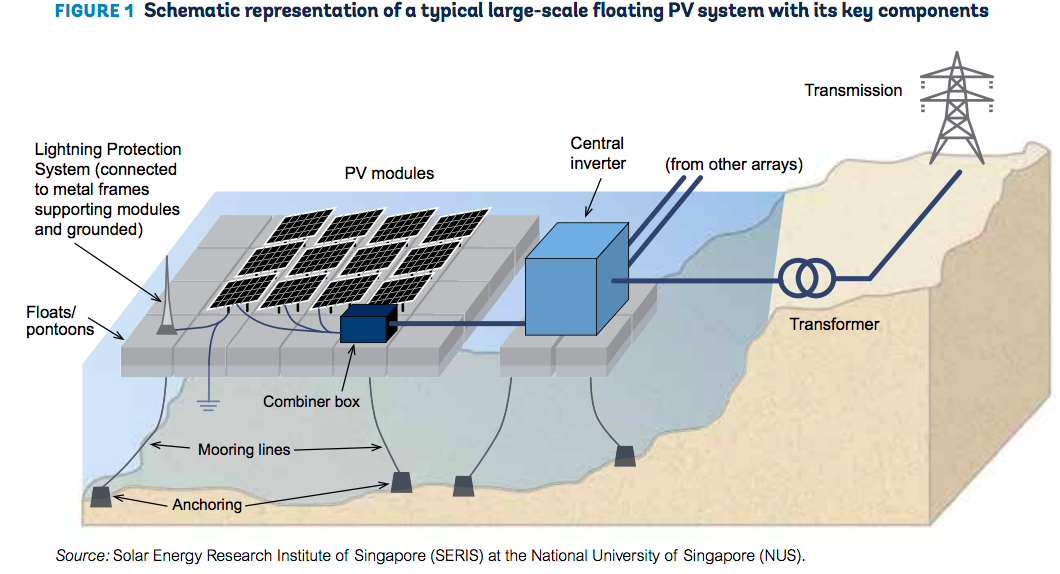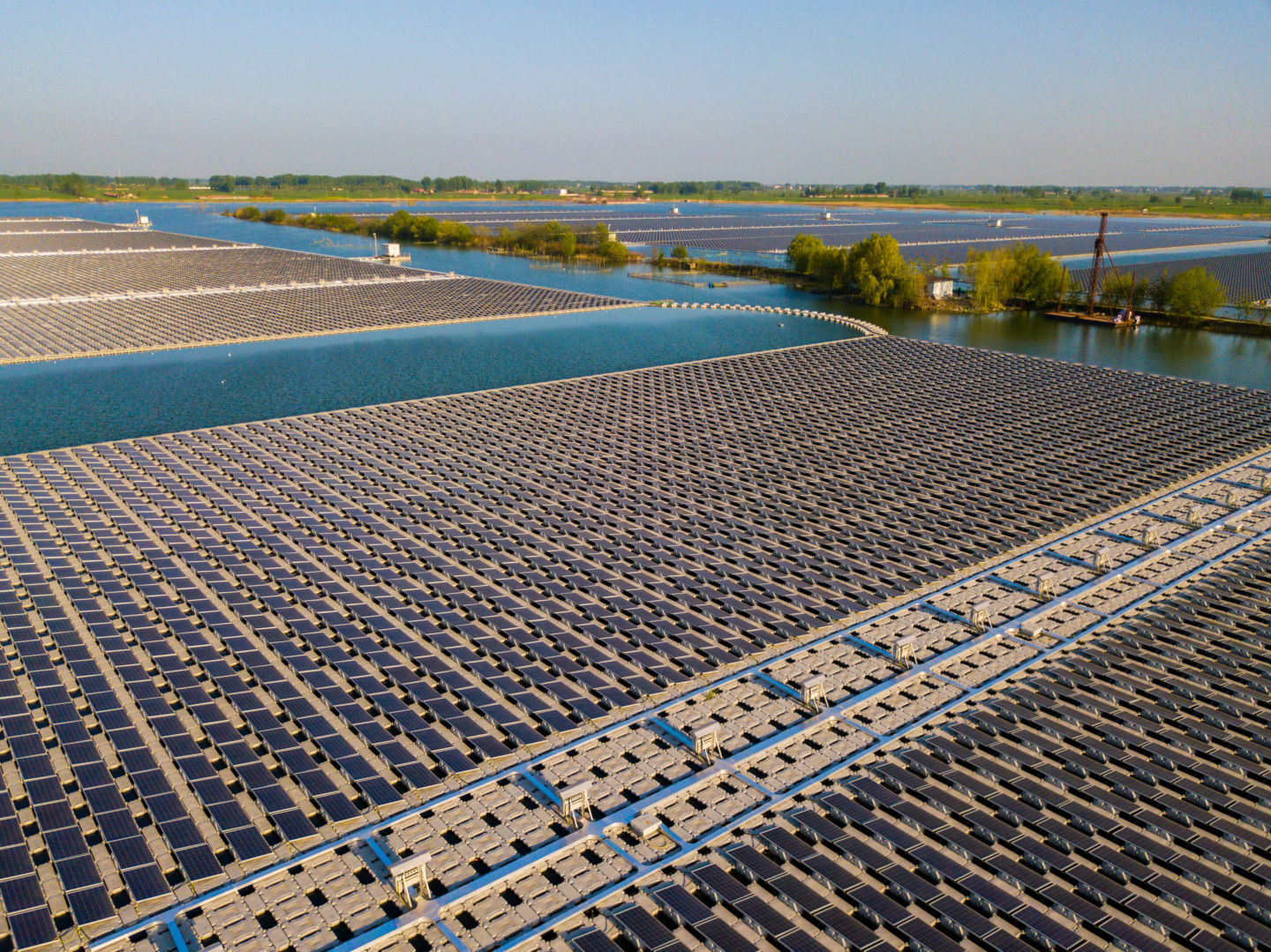Floating solar panels are an excellent symbiote for hydroelectric power plants.

According to a World Bank report , by September 2018, floating solar panels with a total capacity of 1.1 GW were installed. This is about the same as conventional panels were installed in the world in 2000. According to experts, in the next 20 years we will see a boom in the development of technologies associated with floating solar stations.
The fact is that it is not just "solar panels on the water", they not only generate electricity, but also have an impact on the environment. Being on the surface, the panels cover everything that is below from sunlight. This means that some species of aquatic plants do not feel very well and do not grow. In addition, if the panels occupy a sufficiently large water surface area, they slow down the process of evaporation from the surface of the water in a hot climate.
According to the calculations of experts, such panels can reduce the evaporation of water from the surface of water bodies by 90%. In addition, they do not need plots of land, which are very expensive in some regions, or such systems cannot be installed on them. In addition, no need to pay for the rent of land. In Northern California, such panels were installed because almost all the land suitable for installing solar power plants is occupied by vineyards. Thus, the vineyards remained intact, and local households are now provided with energy for many years.

Problems, of course, also exist. First of all, it is the cost of the panels themselves. By themselves, they are not too expensive, but if we consider the design of the platform, which should be located on the surface of the water and be resistant to external influences, then such systems are not cheap. But due to the fact that the price of the photovoltaic panels themselves are falling, the total cost of the floating system is more or less reasonable.

Now floating systems have increasingly begun to merge with hydroelectric power plants. The fact is that in some cases, lowering the water level leads to a drop in the volume of energy produced. Solar panels help to equalize the surges in the production of electricity, introducing the energy generated in the energy network. This is especially important in regions where the drop in water level in local water bodies is a frequent occurrence. For example, in some countries in Africa and Asia.

For the first time the test system "photovoltaic panels + hydroelectric power plants" was tested in Portugal, in the period from 2016 to 2017. According to the report, the installed system produced about 300 megawatt-hour per year. Floating panels installed during the implementation of this project could withstandwaves with a height of 1 m. There are also examples of setting up the “photopanel + hydroelectric station” system in such a way that the solar power station took up a considerable part of the load at peak times of energy consumption - energy is stored during daylight and output to the general network, for example, in the late evening . This helped to avoid blackouts. Such a system works in China, in one of the provinces.
The most productive is a system of solar panels with a capacity of 150 MW. As mentioned above, over time, such systems will become more - if only because their value gradually falls.


